Talking about the Tennessee River report card in Chattanooga: Part 1
Bill Dennison ·A large contingent from the University of Maryland Center for Environmental Science (UMCES) participated in the Tennessee River Basin Network (TRBN) annual meeting in Chattanooga, Tennessee on 15-16 Aug 2017. The contingent included Heath Kelsey, Dylan Taillie and Bill Dennison from the UMCES Integration and Application Network and Andrew Elmore and Eric Davidson from UMCES Appalachian Laboratory. We presented our draft of the Tennessee River report card and facilitated a report card feedback session, gaining crucial insights and important feedback on reporting regions, data sources, and priority issues. This project is funded by the Appalachian Landscape Conservation Cooperative, an applied science and management cooperative working to protect natural lands.

Chattanooga huddles among mountains and ridges in a large bend of the Tennessee River. One of the more famous of these mountains is Lookout Mountain, which we visited for a fantastic aerial view of the city and the Tennessee River. To reach the top of Lookout Mountain we rode the incline railway that was built in 1895. We watched the machinery that operated the cables to allow one car to rise up the steep incline – up to 73% grade! – and the other car to descend. The Point Park National Park is a short walk from the top of the incline and offers more wonderful views of the region. We could look east and see Missionary Ridge, an important Civil War battleground, just beyond Chattanooga.
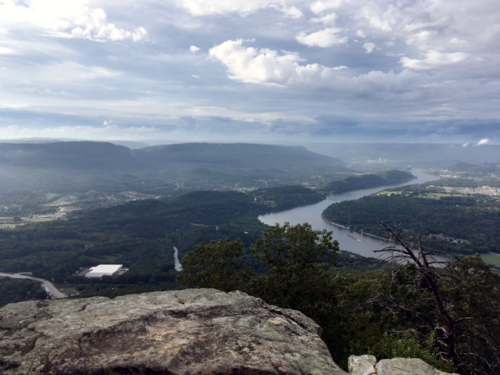
Because of Lookout Mountain’s unique location at the juncture of the ridge and valley physiographic region and the Appalachian plateau, we could see the Cumberland plateau off to the west, a sobering reminder of the Civil War battle that occurred there in November 1863. The New York Peace Memorial towered above the park. It held a statue of a Confederate and a Union soldier shaking hands, which provided a nice contrast to the current toxic political situation surrounding Confederate statues. It was particularly poignant for me to visit Chattanooga because my maternal grandparents met while they were students at the University of Chattanooga (now University of Tennessee at Chattanooga). On their date, they rode up the same incline to Lookout Mountain a hundred years ago.
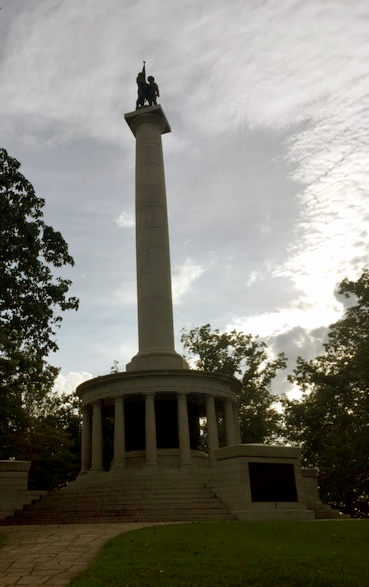
Other historic attractions that we visited included the Chattanooga Choo Choo train station, which is now a hotel, and the adjacent Terminal Building, which was purchased by a railroad porter and recently converted to a microbrewery restaurant. Chattanooga was the location of the first Coca-Cola bottling plant and the first tow truck. Today, Chattanooga is undergoing a renaissance, and boasts the best internet speeds in North America, its own font type (Chatype), and the largest Volkswagen assembly plant in North America. There are an abundance of good restaurants in Chattanooga and quaint shops in historic buildings.
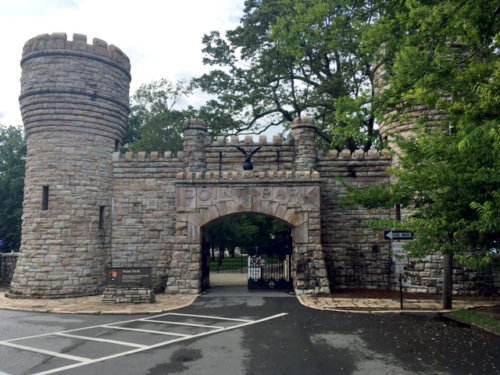
The workshop was held at the Tennessee Aquarium. Located right on the banks of the Tennessee River, it is a significant regional attraction because it is largest freshwater aquarium in the world, with excellent displays of many types of freshwater fish, turtles, birds and salamanders. They also had a specific regional focus on the Tennessee River fauna, which I appreciated. The aquarium also included marine fish such as seahorses, sea dragons and sharks. It also boasts jellyfish, coral reefs, penguins, and even lemurs! I really liked the logos of Tennessee (sky, mountains and river) and the Tennessee Aquarium (outlines of fish and birds).

The Tennessee River Basin Network (TRBN) hosted the workshop. It is a new group of scientists and resource managers from the region, which includes portions of Tennessee, Virginia, North Carolina, Georgia, Alabama, Mississippi and Kentucky. The co-sponsors of the event, Anna George from the Tennessee Aquarium and Bucky Edmonstone from the Tennessee Valley Authority, welcomed the workshop. Kendra Briechle from the Conservation Fund acted as workshop facilitator. She did an excellent job of ensuring that the meeting stayed on schedule and wrapped the meeting up neatly. My colleague from the Chesapeake Bay, Mike Slattery, gave the keynote speech on the Chesapeake Bay efforts. As part of his talk, Mike showed images Cooperstown, New York, which is on the edge of the watershed, down the Susquehanna River, and into Chesapeake Bay. He accompanied these images with short, almost poetic descriptions. I want to get a short videotape of Mike showing these slides while reading his text because of its fantastic introduction to the wonders of Chesapeake Bay and its watershed.
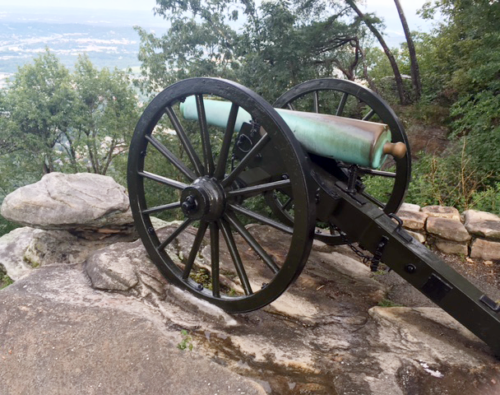
Andrew Elmore and Heath Kelsey teamed up to present the status of the Tennessee River report card. Gillian Bee from the Appalachian Landscape Conservation Cooperative, who has been a key collaborator on the Tennessee River report card, provided an overview of the online data sources. Dan Hanks from Clemson University, introduced ‘Landscape Conservation Design’, which he explained as a systematic process that provides solutions to problems in conservation. What I liked about his approach was the integration of modeling and monitoring results, created through downscaling the NatureScape data layers collated for the entire Appalachian region in order to generate high resolution maps of various terrestrial and aquatic data for the Tennessee River basin.
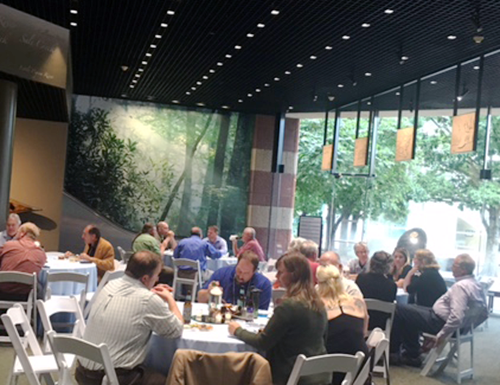
Finally, Jeremy Monroe from Freshwater Illustrated, based in Oregon, blew us away with his film footage of the life in the streams of tributaries of the Upper Tennessee River. I had previously encountered Jeremy during the release of his film titled “Upriver,” based on the Willamette River, which he filmed around the time we were working on the Willamette River report card. I was happy to hear that he had accompanied his screenings of “Upriver” with a display of our Willamette River report card. This time, Jeremy and his colleagues demonstrated how they snorkel in shallow streams. They watch hellbender amphibians wrestle each other, spring runs of buffalo fish spawn, colorful fish like trout, dace, and darters swim, and prehistoric sturgeon lurk. This concept of snorkeling in shallow freshwater was new to many of us, even though we have waded and boated in rivers and snorkeled in oceans and lakes. Many of us resolved to rectify this oversight after seeing what we were missing in Jeremy’s footage. He is now working on a full length, one-hour film entitled “Hidden Rivers” to celebrate the amazing river life in the Southeast U.S.

About the author
Bill Dennison

Dr. Bill Dennison is a Professor of Marine Science and Vice President for Science Application at the University of Maryland Center for Environmental Science.

